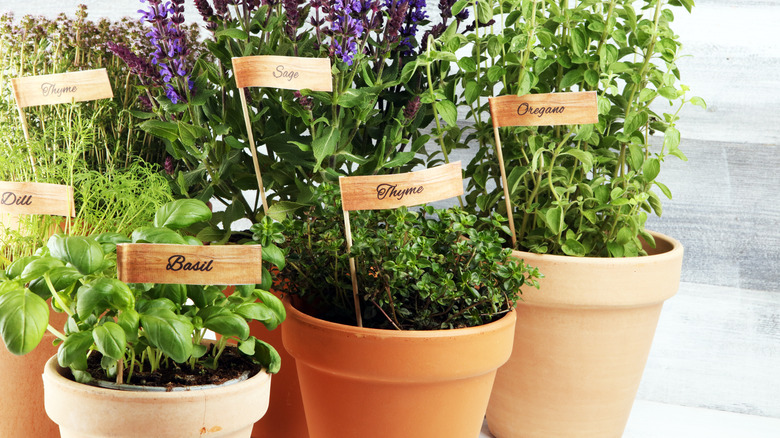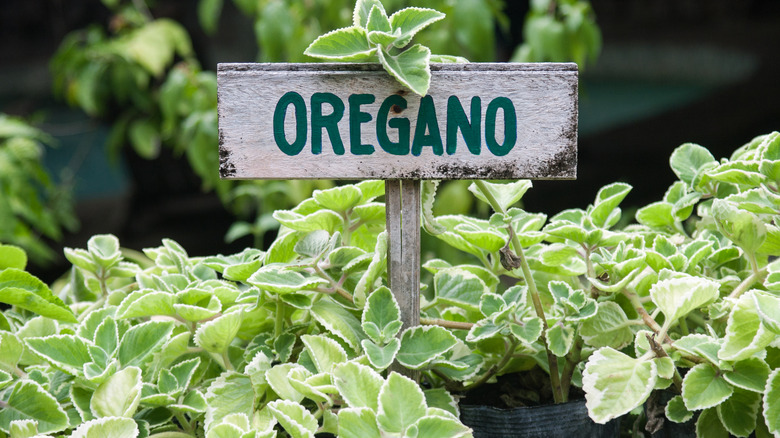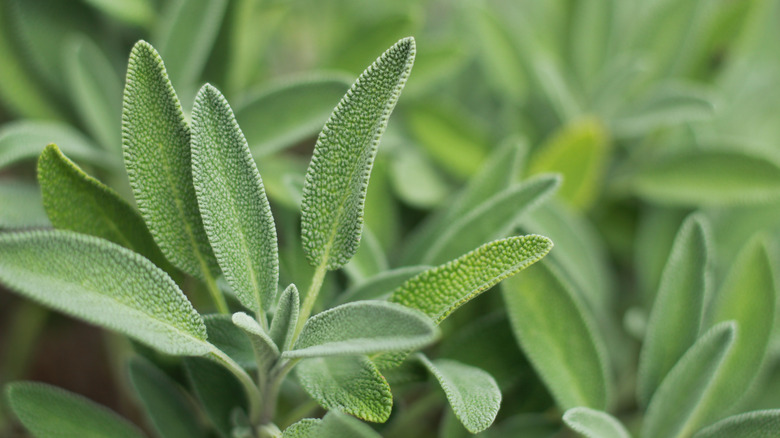The Easy-To-Grow Herb You'll Want To Plant Next To Sage In The Garden
Are you planning an herb garden for your yard and wondering which herbs to grow together? Sage is an excellent choice for your garden as a staple ingredient in many hearty, earthy flavor profile dishes. You'll find it has a sweet, though slightly bitter taste to it. If you're sold on sage for your herb garden, consider planting oregano with it. Both plants work together to support each other and offer a fantastic flavor profile when added to stews and soups.
Growing sage and oregano next to each other is a good example of companion planting. Since both of these herbs work well to support the other's growth and need the same basic conditions, they can be excellent choices for your herb garden. If you want a wider selection of herbs, you could add a few others, like rosemary and thyme. If planting it in your garden, sage works well alongside carrots, strawberries, and tomatoes (and makes for a great tomato sauce ingredient come harvest time). By contrast, there are some plants that, in general, you shouldn't grow with sage, including fennel, due to its very strong taste. Also, don't mix sage and garlic since garlic can stunt the growth of sage in some cases. No matter if you plan to plant sage and oregano in your garden, a windowsill flowerbox, or a few containers on your porch, there are a few tips and tricks you'll need to consider to ensure you get the best growth out of both of these herbs.
Sage and oregano share the same needs
One of the best reasons to plant sage and oregano together, even in the same herb container garden, is because their growing needs tend to be very similar. Both of these plants need full sun to reach their full potential, and you'll likely want to keep them out of the shade, especially in cooler areas. Too much shade and moisture can stimulate the growth of mildew and fungus. Both herbs need the same basic type of soil conditions as well. Make sure the soil is loose and well-draining. It's always a good idea to add some level of organic matter to soil that's too sandy for these herbs. Also, the best pH level for them is between 6.5 and 7. If you're potting them, choose organic potting soil with organic matter for added nutrients to support solid growth.
When planting, make sure both plants have enough room. They can spread out and benefit from having good air circulation through the leaves. For this reason, aim to plant seedlings about two feet apart if possible. Both can be started from seed, depending on your growing season, but plant these herbs as seedlings to start harvesting sooner in the early summer. They don't need a lot of pruning, but once they begin to develop leaves, you'll be able to start clipping them to use in the kitchen.
How sage and oregano benefit each other
As excellent companions for planting herbs, both sage and oregano support the growth of the other beyond just sharing the same growing conditions. For example, the smell of sage is just sweet enough to lure in pollinators and other beneficial insects to the garden. It can help to attract beautiful butterflies as well. At the same time, it draws in hoverflies. While this isn't a pollinator, it is a predatory insect that particularly likes to seek out aphids, a common culprit for pest infestations in gardens.
Oregano can be beneficial to sage and other garden vegetables as well. Oregano's flowers are a particularly desirable treat for many pollinators, especially bees. That means that if you plant these two herbs near your tomatoes, peppers, or other vegetables, you'll likely see more pollination taking place. Oregano is a strong-scented herb too. In particular, pests like parasitic wasps are repelled more effectively when oregano is nearby. Oregano is an excellent option for driving spider mites and aphids away, too. With both close to each other, you can ultimately support their growth and harvest a larger amount of these herbs each year. Both can be used fresh, but can also be dried and used throughout the winter to add warmth to dishes.


